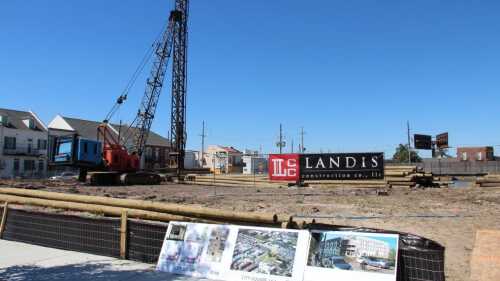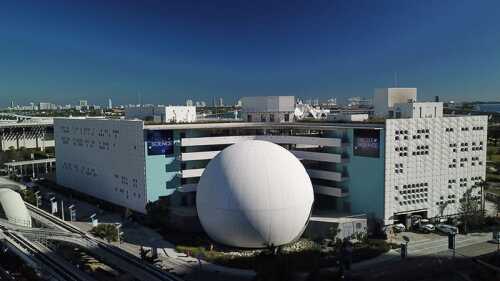The Tea Party may prove to be a large, loud, loosely organized groan of antigovernment protest, but one accomplishment it cannot be denied is turning the very ordinary but vaguely positive word stimulus into a lightning rod that today no politician will come near without protective clothing. Even President Obama avoided using the word in his September address to a joint session of Congress proposing a second job-stimulus package.
At this point, the verbal dust is yet to settle and the question remains: is a government fiscal stimulus initiative as efficacious as Washington Democrats say it is, or the boondoggle that Republican congressional leaders vow to prevent? The debate is being conducted at such a fevered political pitch that many fear nonpolitical reality is being ignored.
What is happening on the ground in the real world, particularly at the building community’s end of it? Has the stimulus money authorized to date energized real estate development and public works projects or jump-started the fledgling alternative-energy market? Has it been enough? Will more stimulus help? Will the failure to provide additional stimulus support undermine whatever progress has been made?
“The stimulus packages have done almost nothing for the architecture profession because they have done nothing for the real estate world,” says Jeffrey Heller, president of San Francisco–based Heller Manus Architects and assistant chairman of Urban Land Iinstitute’s (ULI) Public Development and Infrastructure Council. “They may have helped some large firms, but they have done nothing for small- to mid-size firms like mine.” Heller emphasizes that he is not against the government infusing cash into the economy; he just wants it to be targeted more intelligently. And that is the conundrum: how much money is needed and where will it do the most good?
The Debate
Democrats say an infusion of government cash will revive—or at least halt the further decline of—the ailing economy by replacing money not being spent by businesses or consumers. A primary goal of a stimulus initiative, they insist, is to create jobs, which has the dual effect of mitigating immediate financial crises for unemployed workers while at the same time producing taxpayers. Republicans, on the other hand, say an economic stimulus is simply another ill-considered government plan to spend money it does not have on programs that are short term and will not solve the economy’s fundamental structural problems.
Economists also offer differing opinions on the wisdom of increasing government spending to stimulate the economy, although most agree the government has to intervene in some manner. Nobel Prize–winning economist Paul Krugman, for example, insists that given the extraordinary weakness of the economy and continuing high unemployment rates, a massive government infusion of cash on the scale of World War II expenditures is required if decades-long economic malaise is to be avoided. Current spending levels, he suggests, are like trying to regulate the temperature in an overheated ballroom with a window air-conditioning unit.
| The stimulus packages have done almost nothing for the architecture profession because they have done nothing for the real estate world,” says Jeffrey Heller, president of San Francisco-based Heller Manus Architects and assistant chairman of ULI’s Public Development and Infrastructure Council. |
In February 2009, less than one month after taking office and with the economy in free fall, Obama and the Democrats in Congress passed a $787 billion stimulus bill. By the end of that year, most analysts agreed that the infusion of cash saved the financial system and helped slow the descent. While the economy still faced a long road to recovery, a far greater crisis had been averted.
Congressional Republicans, spurred on by energy on the right flank of their party, questioned whether pouring borrowed government money into a free-market economy is the right approach. They pointed to unemployment rates close to 10 percent as evidence that fiscal stimulus was not working and suggested strongly that increasing government debt could be doing more harm than good. When Obama in 2010 pushed a series of jobs bills, Republicans and conservative Democrats either blocked the legislation or reduced the amount requested in the proposals.
In December 2010, the president and the Republicans agreed on an $858 billion tax plan. While its main purpose was to resolve the dispute over the scheduled expiration of the Bush-era tax cuts (they were extended), it also included an extension of unemployment benefits and a one-year payroll tax holiday. This September, Obama proposed another $450 billion “jobs bill” before a joint session of Congress. But as days passed it became clear that Republicans would not support legislation that included tax increases, as this jobs bill did.
Stimulus Targets
All stimulus packages passed or proposed to date had a twofold agenda: one, create jobs quickly, and two, invest in projects and programs that would have long-term benefits for the economy. One of the least controversial targets was shovel-ready infrastructure projects that cash-strapped states would otherwise defer. Another target with broad support was retrofitting older buildings to meet higher energy-efficiency standards. The hope was that support in this area would generate a new green industry that would not only create permanent, well-paying jobs, but also accelerate the movement away from fossil fuels to renewable energy sources and improve the environment by vastly reducing the carbon footprint of commercial properties.
“In reality, what the stimulus money did was take a huge chunk out of [the inventory of] federal buildings and state department of transportation projects,” says David Winstead, an attorney with Washington, D.C.–based Ballard Spaher, who specializes in public procurement issues. “It took a huge chunk out of the GSA’s [U.S. General Services Administration] deferred maintenance list, and did a great job pumping government money into upgrading public buildings and private buildings leased by government agencies,” explains Winstead, who previously served a term as Maryland’s secretary of transportation and is currently chairman of ULI’s Public Development and Infrastructure Council.
Winstead points out that private contractors were hired to perform the upgrades and privately owned buildings leased by government agencies benefited from stimulus incentives to upgrade. But the question of whether these stimulus measures reached beyond government projects into the private sector remains unresolved. “The $5.5 billion that came out [in the stimulus package] in 2009 was productive: deferred maintenance was engaged and it created a lot of jobs,” says Winstead. “But I think I agree with the Republicans that the bigger problem is to stimulate the private sector. On the real estate side, not a lot of deals are going on. [The stimulus packages] did not create sustainable jobs, and as for green jobs, we have killed green to death in my opinion. The free market is going to drive that now.”
Limited Traction
More than 80 percent of the 79 billion square feet (7.3 billion sq m) of commercial building space in the United States is more than ten years old, and virtually all of it could benefit from technologies introduced in recent years. Pike Research, a Boulder, Colorado–based global clean-technology markets consulting firm, in a 2010 study estimated that “if all commercial space built as of 2010 were included in a ten-year retrofit program, the savings in energy expenses would have the potential to reach more than $41.1 billion each year.”
As Winstead notes, the initiative to retrofit government-owned or government-occupied buildings was an enormous success, but repeating that success in the private sector has, so far, been difficult. Government buildings have conditions in place that make it possible to undertake major retrofits that many privately owned properties do not. Government buildings are usually old and thus can benefit from the latest energy-saving technologies. The agencies that occupy them are high-quality, stable tenants, and the funds for upgrades are readily available from government coffers. Privately owned properties, by contrast, view upfront costs and payback time as controlling factors.
“There are two types of retrofitting projects,” explains David Begelfer, CEO of NAIOP Massachusetts, a commercial real estate advocacy organization. “The first is a redevelopment of a property where major changes take place. That’s the easy one. The second is a building currently rented and trying to make improvements with tenants still in place. There are major costs without an immediate payback. In fact, the savings go to the tenants and not to the owner.”
The most spectacular example of retrofitting potential is the Empire State Building, the iconic New York City office tower built in 1931. In 2009, the edifice was scheduled for its periodic renovations and its owner, Malkin Associates, decided to transform the routine rehab into a retrofitting showcase. It launched a comprehensive retrofitting initiative that after completion in 2013 will reduce the skyscraper’s energy use by 38 percent per year, saving $4.4 million annually.
The Empire State Building, of course, is a unique structure with inherent assets that make costly upgrades feasible. For most privately owned properties, however, such expenditures are more problematic, even with government incentives in place. Indications are that the full-scale retrofitting movement envisioned has yet to begin. According to analysts, the majority of retrofitting projects are undertaken in conjunction with regularly scheduled maintenance, with most limited to the low-hanging fruit such as energy-efficient windows; heating, ventilation, and air-conditioning systems; and lighting.
“I do think there are fewer new buildings and fewer renovations going on because of the economy,” says Jim Batchelor, president of Arrowstreet, a Somerville, Massachusetts–based architecture firm, and a member of ULI’s Responsible Property Council. “Today, whenever there are renovations, owners look very carefully at the bottom line. Retrofitting to increase sale value or for ‘greenish’ reasons does not seem to be a primary motivation. It’s fair to say that some of the publicly expressed hopes [for retrofitting] have been a disappointment,” he says.
Picking Winners
Heller, the San Francisco architect, is fully engaged in large-scale infrastructure projects in China and laments the meager U.S. efforts. “I go to China and I work on high-speed rail projects each year,” he says. “China also has a coherent environmental policy and they act on it. The U.S. has no environmental policy.” Republicans who block initiatives to support projects in these areas “are dead wrong,” he says. “I’m not a partisan political guy. I’m pragmatic. The issue of infrastructure [repairs and upgrades] is incontrovertible.”
Yet, given current economic conditions, many analysts question whether investing in industries of the future is the best policy when jobs are needed right now. They note that many segments of the green industry are not prepared for a top-down stimulus when there is insufficient bottom-up demand. A case in point is the $38 billion loan guarantee program designed to stimulate the clean-technology industry. The Obama administration claimed the program would create 65,000 new jobs, but after two years and half the allocation spent, the program can point to only 3,545 new jobs. (The U.S. Department of Energy, however, says the green jobs program is on track to meet its goals.)
Moreover, many analysts contend that presently the market will not support the green industry on a large scale. “There are good reasons to create green jobs,” former Federal Reserve vice chairman Alan Binder told the Washington Post, “but they have more to do with green than with jobs.”
Supporting the contention that the clean-industries market is struggling is the recent collapse of Solyndra, a highly touted California solar panel maker.
Some analysts say a better approach would be for the government to stimulate demand for green products rather than investing in individual companies. Others insist the government should get out of the way and let the market work.
“I don’t think much of the stimulus program,” says John Cigna, vice chairman of ULI’s Transit-Oriented Development Council and a Pittsburgh–based executive recruiter for the real estate industry. “Bailing out the banks was correct; it saved jobs. But as far as real estate is concerned, the government should let assets wash through the system. Yes, somebody is going to get hurt along the way; sorry.” But not cleaning out troubled assets only delays the recovery. “How many years later are banks still holding on to bad loans?” Cigna asks.
In the end, the building community appears as perplexed as every other sector. There seems to be a consensus that the stimulus programs implemented to date have failed to meet the needs of the real estate sector. But objections appear to be directed more to tactics than to overall strategy. All agree the economy needs help—and if the needed help comes from the government, it will be warmly welcomed.





